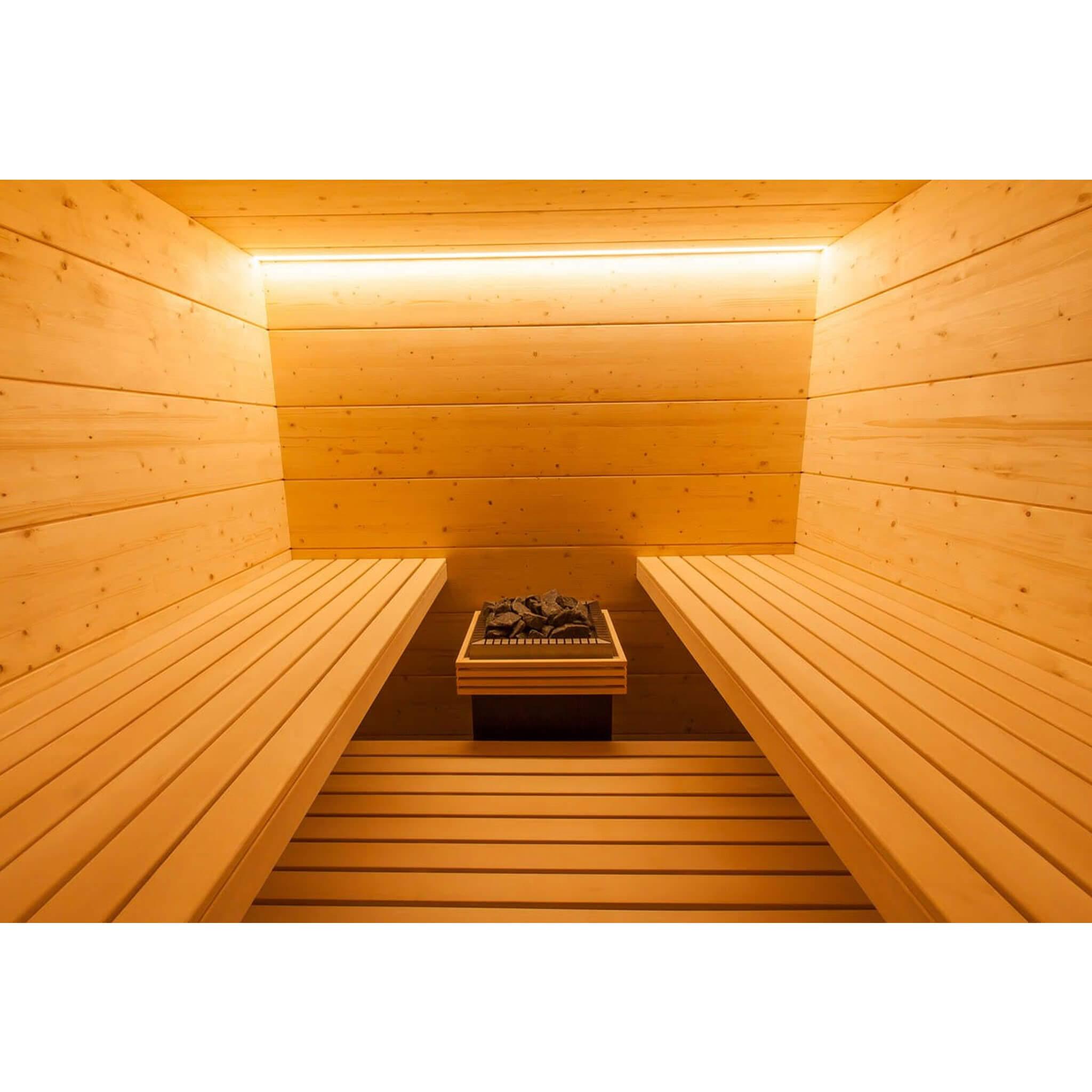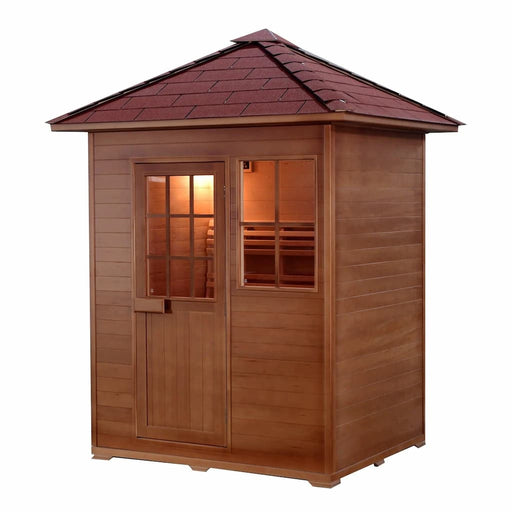The Best Guide To Traditional Sauna
The Best Guide To Traditional Sauna
Blog Article
All about Traditional Sauna
Table of Contents6 Simple Techniques For Traditional SaunaNot known Facts About Traditional SaunaThe Best Guide To Traditional SaunaTraditional Sauna Things To Know Before You Get This
Most of the weight shed in a sauna is water loss and is re-gained upon rehydrating. Without a doubt sauna can be an important part of a healthy weight loss program. To look at the differences between conventional and IR saunas, I will certainly divide these right into proven, academic, and fabricated distinctions.Hence, the hottest factor in the saunawhich goes to the ceiling directly over the sauna heateris normally in between 185 and 190 F. Traditional Sauna. Claims that a typical sauna exceeds 200 F is just not real and not suitable for electrical saunas sold in the United States. The temperature for a far-infrared sauna is normally established in between 120 and 140 F; nonetheless, unlike the typical sauna, the objective in and IR room is not to accomplish a high temperature
Because of this, the temperature level difference is virtually pointless, given that extreme sweating leads to both sauna types, however the approach of warming the body is different. In an IR sauna the bather will certainly feel hot and will certainly sweat profusely, yet at much reduced temperature levels. Thus, if the objective is to spend longer durations of time in the sauna, the IR sauna is a great option.

The Single Strategy To Use For Traditional Sauna
When the high temperature is attained, the elements cycle on and off to maintain the heat. The majority of conventional sauna customers take pleasure in putting water over the rocks to create vapor to increase sauna humidity levels. The benefits of pouring water over the rocks include: making the space extra comfortable, moistening the nasal passages, and enabling the usage of aromatherapy by blending necessary oils with the water.
In a far-infrared sauna, the warmth waves pass through the body to effectively heat up the body and elevate the body core temperature. To attain this boosted temperature level, Far-infrared emitters produce infrared power which is close to the very same wavelength as that which the body naturally emitsoften described as the "Essential Array" of 7 to 14 microns), so the power is well received by the body.
When the power gets in the body, it triggers the body temperature to raise and eventually results in perspiration. In an infrared sauna it's essential for the emitters/heaters to stay on nearly frequently. Since there is no mass of rocks to preserve warm, the sauna will certainly cool if the emitters turned off.
As mentioned over, the sauna bather in an infrared area desires to position himself in front of running emitters to obtain maximum take advantage of the heat. The heating time for both areas can be extremely different, relying on exactly how the spaces are made use of. For a standard sauna, a bather must enable 30-40 minutes for the area to achieve a wanted temperature level and to effectively pre-heat the rocks.
Not known Incorrect Statements About Traditional Sauna
A well built sauna will typically accomplish a temperature level of 150-160 F in about 30-40 minutes. For hotter temperatures, the space might require to heat for a longer period.
To some, 15 minutes was "thrown away" while the infrared energy heated up the wood panels as opposed to warming a body, while others find a pre-heated room to resource be much more comfortable and think a raised beginning temperature level is necessary to begin sweating. The size of advised usage for each and every room is around the exact same (10-15 mins per session); nonetheless, as a result of the lower air temperature levels and the capacity to really feel the results of infrared warmth faster than a conventional sauna, it is not unusual for an individual to invest a total amount of 20-30 minutes in an infrared sauna.
Standard saunas tend to be bigger (hence make use of more electrical energy) than infrared saunas, although conventional saunas are definitely offered in one and two person sizes too. For a two-person conventional sauna, 5x6 or 5x7 size is most preferred. The leading bench can easily seat two or three individuals and is likewise long enough to relax throughout the sauna session.


The ordinary expense per kWH of electrical energy in the U.S. is about $0.11, so a 4.5 kW heating unit will set you back about $.50 to run for one hour, if the heating unit runs constantly for one hour. Usually a sauna heater will certainly run for 75% of the first hour and 50% of succeeding hours on check out this site because the elements cycle once the established temperature is attained.
The smart Trick of Traditional Sauna That Nobody is Discussing
A 2 individual far-infrared space is typically literally smaller sized than a typical sauna, typically concerning 4' x 4' or smaller sized. The IR home heating system is typically 1.5-1.7 kW using a 120 volt 15 amp plug-in service. Given like this that the area can be made use of sooner than a sauna room, we will assume the room is used for to of an hour including warm up time.
Finally, there is a seldom talked about difference in the social experience between the 2 rooms. While our society has lost some of the social benefit of the traditional sauna experience, it can be really socially rewarding. From family members time in the sauna, to heart-felt discussions with better halves, to sauna partiesthe typical sauna experience can lead to intimate mingling.
A lot of higher end infrared spaces include tinted light therapy, audio systems and full-glass fronts.
Report this page